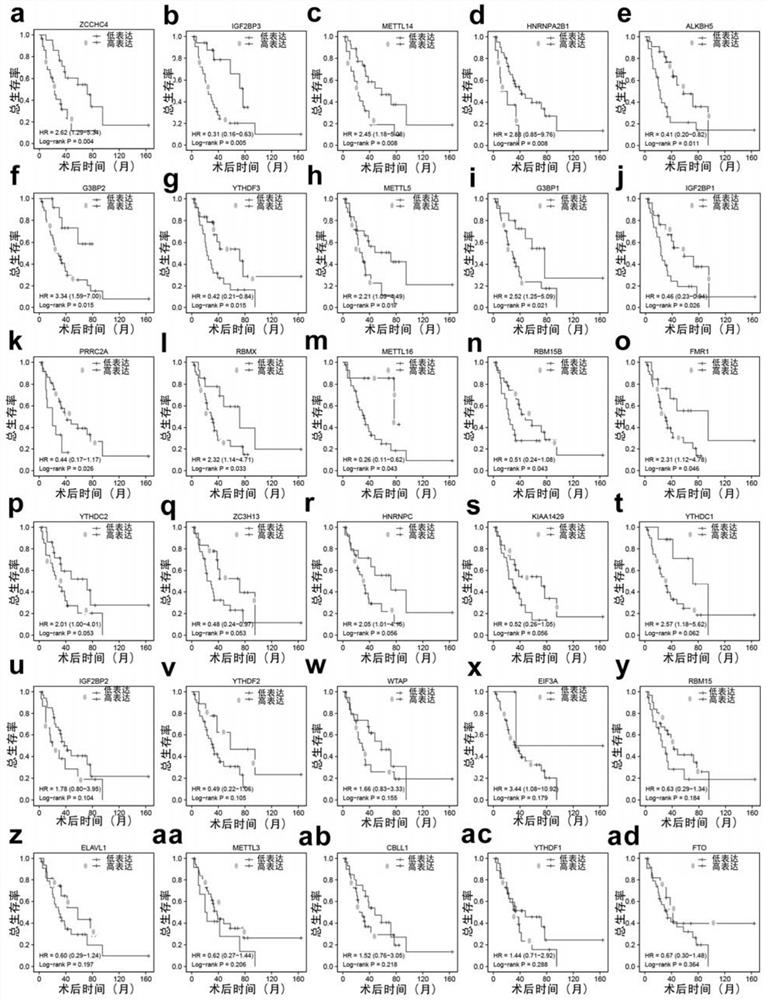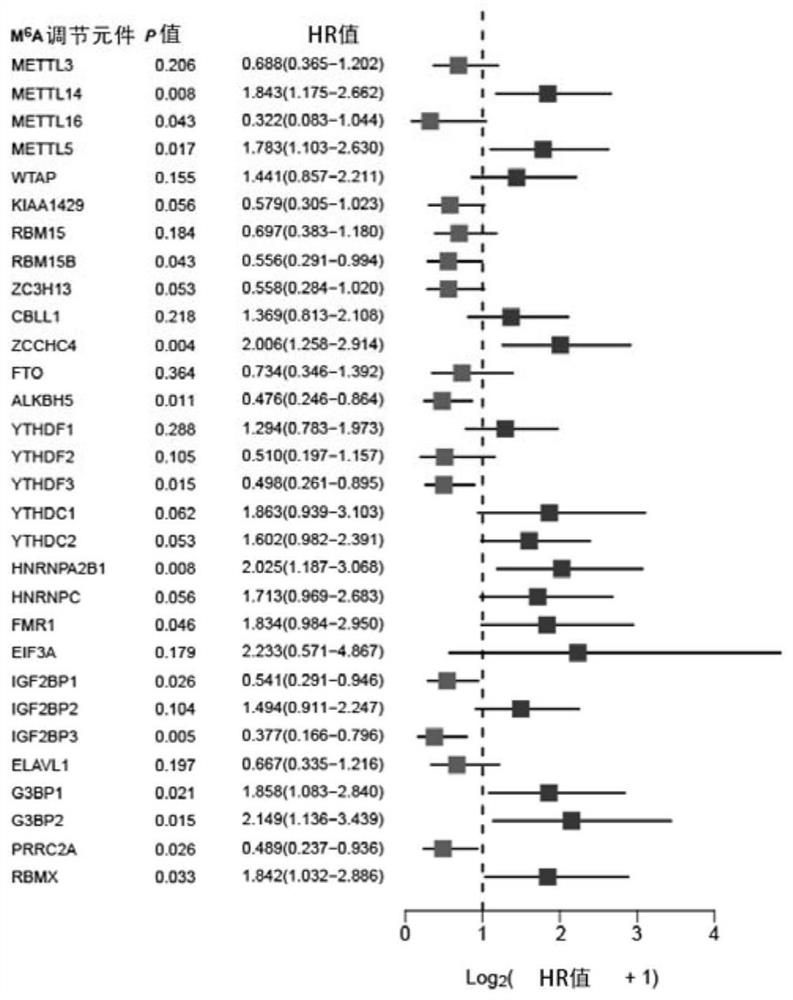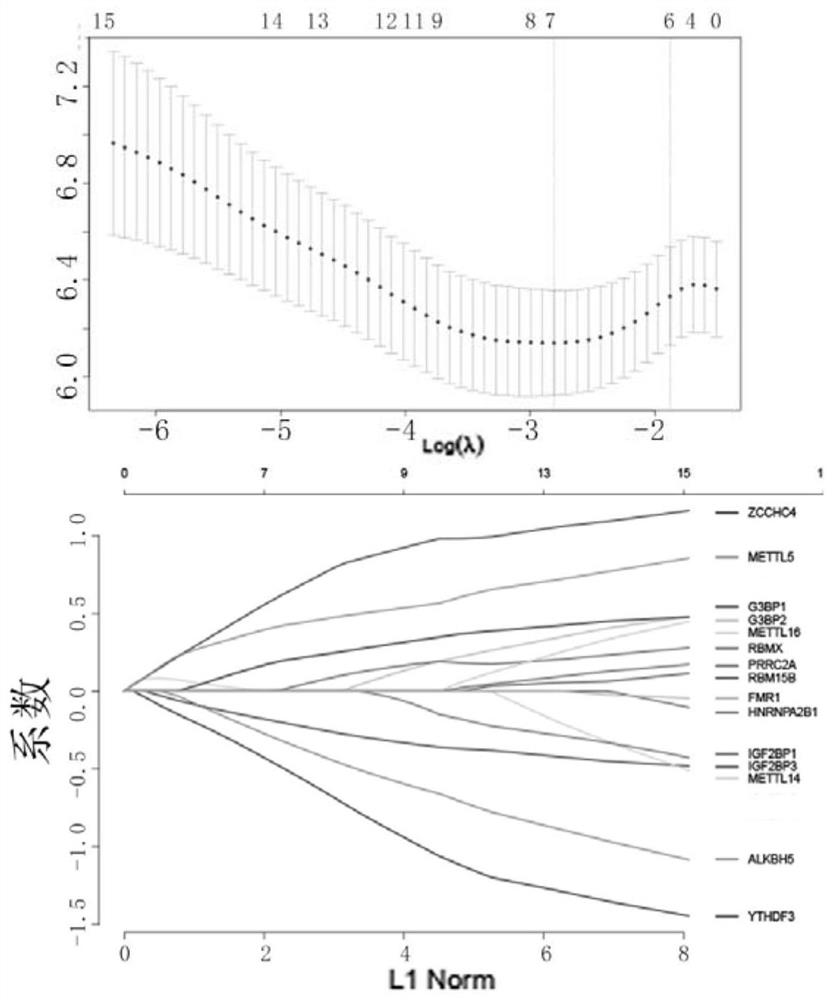System for predicting benefit of adjuvant chemotherapy of small cell lung cancer and identifying chemotherapy drug-resistant treatment target and application
A technology for small cell lung cancer and prognosis, applied in the field of biomedicine, can solve problems such as unclear research, and achieve the effect of improving treatment efficacy
- Summary
- Abstract
- Description
- Claims
- Application Information
AI Technical Summary
Problems solved by technology
Method used
Image
Examples
Embodiment 1
[0088] Example 1. Prediction of curative effect of adjuvant chemotherapy for small cell lung cancer and application of drug resistance targets
[0089]Download the GSE40275 cohort from the GEO database (https: / / www.ncbi.nlm.nih.gov / geo / ) as a training cohort for constructing small cell lung cancer prediction models; Lin-fixed paraffin-embedded FFPE tissues served as a validation cohort and an independent cohort for model validation. The clinical characteristics of all patients are shown in Table 1.
[0090] Table 1 Clinical characteristics of patients with small cell lung cancer
[0091]
[0092] Note: NA means not available
[0093] In both the validation cohort and the independent cohort, the inclusion criteria for small cell lung cancer patients were as follows: 1) The patient was diagnosed with small cell lung cancer by the National Cancer Center; 2) The patient’s diagnosis and treatment information was complete; 3) The patient did not receive neoadjuvant therapy befo...
Embodiment 2
[0255] Example 2. Identification of drug-resistant targets for adjuvant chemotherapy in patients with small cell lung cancer
[0256] Select the genes with a coefficient >1 in the prediction model in Example 1—ZCCHC4, METTL5, G3BP1, and RBMX—to explore their mechanism of action in chemotherapy resistance, and identify the target genes of chemotherapy resistance.
[0257] 1. Expression of candidate genes in small cell lung cancer
[0258] Comparing the expression of candidate genes in small cell lung cancer tissue and normal tissue, the results showed that all candidate genes were highly expressed in tumor tissue (P Figure 18 )
[0259] 2. Knock down expression of candidate genes
[0260] The candidate gene was knocked down by transient cell transfection technology, as follows:
[0261] siRNA transfection reagent adopts life technologies TM Lipofectamine RNAiMAX Reagent. The siRNAs targeting ZCCHC4, METTL5, G3BP1 and RBMX genes were siRNAs of siZCCHC4, siMETTL5, siG3BP1 and...
PUM
 Login to View More
Login to View More Abstract
Description
Claims
Application Information
 Login to View More
Login to View More - R&D
- Intellectual Property
- Life Sciences
- Materials
- Tech Scout
- Unparalleled Data Quality
- Higher Quality Content
- 60% Fewer Hallucinations
Browse by: Latest US Patents, China's latest patents, Technical Efficacy Thesaurus, Application Domain, Technology Topic, Popular Technical Reports.
© 2025 PatSnap. All rights reserved.Legal|Privacy policy|Modern Slavery Act Transparency Statement|Sitemap|About US| Contact US: help@patsnap.com



